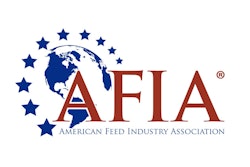
The U.S. Department of Agriculture (USDA) will offer financial assistance to dairy producers whose premises are affected by H5N1 influenza virus. The assistance aims to improve biosecurity in order to reduce the spread of the virus and to provide financial tools for lost milk production.
The move comes two weeks after USDA’s Animal and Plant Health Inspection Service (APHIS) began requiring dairy cattle to receive a negative test for Influenza A virus prior to interstate movement.
USDA said the following steps will further equip producers with tools they can use to keep their affected herds and workers healthy and reduce risk of the virus spreading to additional herds:
- Protect against the potential for spread between human and animals. Provide financial support (up to US$2,000 per affected premises per month) for producers who supply personal protective equipment (PPE) to employees and/or provide outerwear uniform laundering, for producers of affected herds who facilitate the participation of their workers in workplace and farmworker study. Complementary to USDA’s new financial support for producers, workers who participate in the study are also eligible for financial incentives to compensate them for their time, regardless of whether the study is led by federal, state, or local public health professionals.
- Support producers in biosecurity planning and implementation. Provide support (up to US$1,500 per affected premises) to develop biosecurity plans based on existing secure milk supply plans. This includes recommended enhanced biosecurity for individuals that frequently move between dairy farms – milk haulers, veterinarians, feed trucks, AI technicians, etc. In addition, USDA will provide a US$100 payment to producers who purchase and use an in-line sampler for their milk system.
- Provide funding for heat treatment to dispose of milk in a biosecure fashion. This will provide producers a safe option for disposal of milk. Heat treatment performed in accordance with standards set by the U.S. Food and Drug Administration (FDA) is the only available method considered to effectively inactivate the virus in milk. If a producer establishes a system to heat treat all waste milk before disposal, USDA will pay the producer up to US$2,000 per affected premises per month.
- Reimburse producers for veterinarian costs associated with confirmed positive H5N1 premises. This provides support to producers to cover veterinary costs necessarily incurred for treating cattle infected with H5N1, as well as fees for veterinarians to collect samples for testing. This can include veterinary fees and/or specific supplies needed for treatment and sample collection. Veterinary costs are eligible to be covered from the initial date of positive confirmation at NVSL for that farm, up to US$10,000 per affected premises.
- Offset shipping costs for influenza A testing at laboratories in the National Animal Health Laboratory Network (NAHLN). USDA will pay for the cost of shipping samples to NAHLN labs for testing. USDA will pay actual shipping costs, not to exceed US$50 per shipment for up to two shipments per month for each affected premises. Testing at NAHLN laboratories for samples associated with this event (e.g., pre-movement, testing of sick/suspect animals, samples from concerned producers) is already being conducted at no-cost to the producer. Taken together, these tools represent a value of up to US$28,000 per premises to support increased biosecurity activities over the next 120 days.
- Compensate producers for loss of milk production. USDA is taking steps to make funding available from the Emergency Assistance for Livestock, Honey Bees, and Farm-raised Fish Program (ELAP) to compensate eligible producers with positive herds who experience loss of milk production. While dairy cows that have been infected with H5N1 generally recover well, and there is little mortality associated with the disease, it dramatically limits milk production, causing economic losses for producers with affected premises. USDA can support farmers with the ELAP program to offset some of these losses. This compensation program is distinct from the strategy to contain the spread.
- Work with states to limit movement of lactating cattle. Additionally, USDA will work with and support the actions of states with affected herds as they consider movement restrictions within their borders to further limit the spread of H5N1 between herds to reduce further spread of this virus.
USDA will make US$98 million in existing funds available to APHIS to fund these initiatives. If needed, USDA has the authority, with congressional notification, to make additional funds available.
Additional details on how producers can access and apply for the financial tools is forthcoming.
Other funding available
The Department of Health and Human Services (HHS) also has made funding investments through the Centers for Disease Control and Prevention (CDC) and FDA totaling USUS$101 million to mitigate the risk of H5N1 and continue its work to test, prevent and treat H5N1.
Additionally, the FDA is making an additional USUS$8 million available to support its ongoing response activities to ensure the safety of the commercial milk supply. This funding will support the agency’s ability to validate pasteurization criteria, conduct surveillance at different points in the milk production system, bolster laboratory capacity and provide needed resources to train staff on biosecurity procedures. These funds will also support H5N1 activities in partnership with state co-regulatory partners, who administer state programs as part of the federal/state milk safety system. It may also allow the FDA to partner with universities on critical research questions.


















